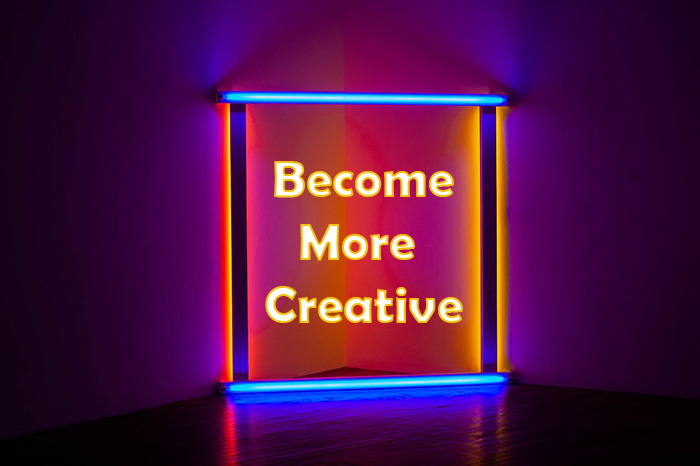Every now and then, people wish they could see in themselves an ability to generate new ideas, concepts, or solutions that are original, valuable, and meaningful. This in itself is what we call creativity. But how doe we become more creative?
In everyone is creativity deposited, but there must be a sharpening or refinement necessary to bring this out in its most admirable form.
Indeed, in its simplest form, creativity involves thinking in novel ways, combining existing knowledge or experiences in unique ways. Also, to become more creative, you must break away from the conventional patterns of doing things to explore new possibilities.
Creativity can manifest in various forms, such as artistic expression (painting, music, writing), problem-solving, innovation, or even day-to-day activities like cooking or storytelling.
At its core, creativity is about thinking beyond the ordinary, allowing for imagination, curiosity, and experimentation to lead to fresh insights or products.
While it is often associated with the arts, creativity plays a crucial role in science, business, technology, and virtually every field of human endeavor.
It requires both divergent thinking (exploring many different ideas) and convergent thinking (finding the best solution to a problem).
Certainly, there is a way to become more creative. Here are some effective ways to achieve this.
1. Engage In Diverse Activities
Nothing comes to a person from nothing. There is often a motivating factor. Simply put, this means that there must be something that would give the creative effect.
It begins with exposing yourself to a variety of experiences, hobbies, and interests.
Exploring different domains can stimulate creativity by providing new perspectives and ideas.
2. Practice Mindfulness and Meditation
Mindfulness practices can help quiet the mind and foster a receptive state conducive to creativity.
Regular meditation can enhance focus, reduce mental clutter, and promote creative thinking.
3. Exercise Regularly
Physical activity has been shown to boost cognitive function and enhance creativity.
Engage in regular exercise to improve mood, increase energy levels, and stimulate creative thinking.
4. Embrace Failure And Iteration
it is easy to run away from an idea when it fails. But being creative requires that you stay.
View failure as a natural part of the creative process rather than a setback.
Embrace experimentation and iteration, learning from mistakes and using them as opportunities for growth and innovation.
5. Seek Inspiration From Nature
Spend time outdoors and immerse yourself in the beauty of nature.
Nature has a calming effect on the mind and can inspire creative ideas through its patterns, colors, and forms.
6. Limit Distractions
Distractions could stop you from becoming as creative as you should be.
As a result, you need to create a conducive environment for creativity by minimising distractions.
Find a quiet space where you can focus without interruptions and disconnect from digital devices when brainstorming or creating.
7. Collaborate With Others
Also, collaborating with colleagues, peers, or mentors can stimulate creativity. This comes through the exchange of ideas, perspectives, and feedback.
Furthermore, you need to embrace teamwork and collective brainstorming sessions to generate innovative solutions.
8. Practice Divergent Thinking
Divergent thinking involves generating multiple ideas or solutions to a problem without judging their validity.
Engage in brainstorming sessions or creative exercises that encourage free-flowing ideation and exploration.
9. Expose Yourself To Art And Culture
Immerse yourself in art, literature, music, and other forms of creative expression.
Have You Read: 11 Highly Important Soft Skills To Acquire
Visiting museums, attending performances, or exploring different cultural traditions can inspire creativity and ignite your imagination.
10. Keep A Creativity Journal
Maintain a journal or sketchbook to capture ideas, insights, and observations.
Use your creativity journal as a space for experimentation, reflection, and creative exploration.
this journal could be on your phone or a notebook that you have set aside for this purpose.
11. Challenge Assumptions And Conventions
Question assumptions, challenge norms, and think outside the box. Adopt a mindset of curiosity and openness to unconventional ideas and perspectives.
12. Take Breaks And Rest
Finally, allow yourself time for relaxation and rest to prevent burnout and recharge your creative energy.
Taking breaks can help refresh your mind, alleviate mental blocks, and stimulate new ideas.
Incorporating these practices into your routine can help cultivate and nurture your creativity, allowing you to tap into your full creative potential.
How To Create Lower Thirds On CapCut



